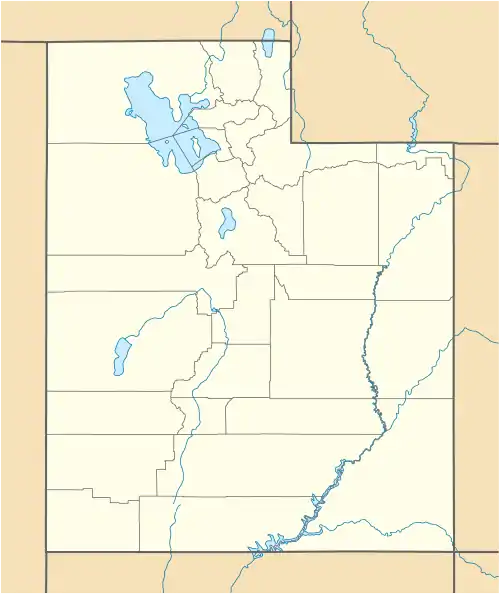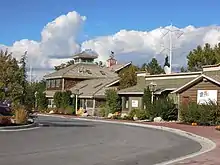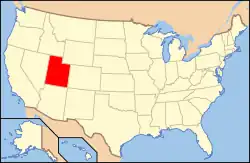Gardner Village | |
 Gardner Mill, November 2011 | |
  | |
| Location | 1100 West 7800 South West Jordan, Utah United States |
|---|---|
| Coordinates | 40°36′33″N 111°55′21″W / 40.60917°N 111.92250°W |
| Area | 1.5 acres (0.61 ha) |
| Built | 1877 |
| Built by | Archibald Gardner |
| Architectural style | Greek Revival, Federal |
| NRHP reference No. | 82004153[1] |
| Added to NRHP | September 29, 1982 |
The Gardner Mill, at 1100 West 7800 South in West Jordan, Utah, United States was built in 1877 and is the focal point of today's Gardner Village.
Description

The mill includes Greek Revival, and Federal architecture and has also been known as West Jordan Mill. It was listed on the National Register of Historic Places in 1982.[1][2]
It is historically significant for association with Archibald Gardner, a Scottish immigrant and pioneer builder of more than 30 flour mills, sawmills, and other mills in Utah and Wyoming, as well as having built canals, roads, and dams.[2]
The current Gardner Mill was a replacement of an earlier one, and included Federal architecture styling. It is the only surviving mill in Utah that is documented to be one of Gardner's works.[2]
Other NRHP-listed or -nominated mills in Utah include: Isaac Chase Mill, Salt Lake County; Joseph Wall Gristmill, Sevier County; E. T. Benson Mill, Tooele County; Huntington Roller Mill, Emery County; Bicknell Gristmill, Wayne County; and the Burch-Taylor Mill (formerly listed), Weber County.[2]
The mill and surrounding buildings have been turned into Gardner Village, that has restaurants, small shops and event venues nestled around the Gardner Mill. The mill itself houses a restaurant and a furniture store. Gardner Village has been operating since May 1980.
See also
References
- 1 2 "National Register Information System". National Register of Historic Places. National Park Service. July 9, 2010.
- 1 2 3 4 "National Register of Historic Places Inventory/Nomination: Gardner Mill / West Jordan Mill". National Park Service. and accompanying photos
External links

